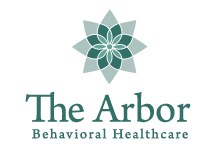 A disproportionate number of people struggling with substance use disorders have a history of trauma. Unresolved trauma can lead people to substance use as a way of coping with the trauma and numbing the pain. The behavioral health industry has developed numerous evidence-based therapies and holistic approaches to address trauma and the mental health or substance use disorders that often accompany it. Eye movement desensitization and reprocessing (EMDR) may be an ideal treatment when trauma is a factor in addiction. For more information about EMDR therapy and other services, contact The Arbor Behavioral Healthcare at 844.413.2690 today.
A disproportionate number of people struggling with substance use disorders have a history of trauma. Unresolved trauma can lead people to substance use as a way of coping with the trauma and numbing the pain. The behavioral health industry has developed numerous evidence-based therapies and holistic approaches to address trauma and the mental health or substance use disorders that often accompany it. Eye movement desensitization and reprocessing (EMDR) may be an ideal treatment when trauma is a factor in addiction. For more information about EMDR therapy and other services, contact The Arbor Behavioral Healthcare at 844.413.2690 today.
How an EMDR Therapy Program Can Help Heal Trauma
Eye movement desensitization and reprocessing is a powerful therapy for addressing trauma. It helps clients process painful memories and reduce their emotional impact. Here’s how it works:
- Clients recall a troubling memory in detail within a safe therapy session.
- During this, they receive bilateral stimulation, often by tracking the therapist’s finger as it moves back and forth.
- Trauma is stored in the brain when cross-hemisphere communication is impaired, leaving memories “stuck.”
- EMDR helps restart the brain’s natural self-soothing process, enabling clients to replace negative beliefs with positive ones.
- Studies show just 6–12 sessions can significantly reduce the effects of trauma.
Throughout the therapy process, the client is supported with additional resources based upon a customized treatment plan designed by compassionate and experienced behavioral health professionals.
Eight Steps of EMDR
Eye Movement Desensitization and Reprocessing Therapy can be understood in eight steps:
Taking the Client’s History
In the first phase, the therapist takes a comprehensive client history and helps them identify their most disturbing trauma memories, triggers in current life, and goals for recovery.
Preparation for Therapy
In phase two, the client receives an explanation of what treatment will look like and self-regulation training. This empowers them to take care of themselves if the work becomes too intense at any point.
Taking Stock of Target Memories
Before beginning the actual desensitization process, the therapist helps the client activate the memories they’ll work with and determine what sensations and cognitions come up. Specifically, the therapist records the client’s stated thoughts, affect, image, and body sensations related to each memory. The client may also rate how valid they believe certain thoughts are and how disturbing certain emotions are.
Desensitizing Trauma Memories
The client engages in side-to-side eye movement or another form of bilateral stimulation while consciously focusing on their trauma memory. They then report any new thoughts or memories that arise, and the therapist may use these to guide future EMDR sessions. The process continues until the client can work through the trauma memory without distress.
Installing Positive Cognitions
The therapist helps the client replace negative self-beliefs with positive cognitions.
Scanning the Body
The client takes stock of their physical responses while engaging with trauma memories. They then receive further bilateral stimulation to process these physical components.
Closure
Any target memories not fully processed are contained using special techniques to be safely held until the next session.
Determining Next Steps
The final step occurs during the following session. The client and therapist evaluate the client’s mental state, assessing whether previous desensitization remained intact, what new memories might be emerging, and what the focus should be for the current session.
FAQ About EMDR
1. What Is EMDR Therapy?
EMDR (Eye Movement Desensitization and Reprocessing) is a therapeutic approach designed to help individuals process and heal from distressing or traumatic memories. It incorporates bilateral stimulation, such as guided side-to-side eye movements, to reduce the emotional intensity associated with these memories.
2. Who Can Benefit from EMDR?
EMDR is commonly used to treat individuals with post-traumatic stress disorder (PTSD), but it can also be effective for those dealing with substance use disorders, anxiety, depression, phobias, grief, and other emotional or psychological challenges linked to adverse life experiences.
3. How Long Does EMDR Therapy Typically Take?
The length of EMDR therapy varies depending on the complexity of the individual’s trauma and their specific needs. Some people may experience resolution of symptoms after a few sessions, while others may require extended treatment to address multiple traumatic events.
4. Is EMDR Scientifically Proven?
Yes, EMDR is supported by extensive research and is recognized as an evidence-based treatment for trauma and PTSD by leading health organizations, including the American Psychological Association (APA) and the World Health Organization (WHO).
5. Are There Any Risks or Side Effects to EMDR?
While generally considered safe, some individuals may experience temporary discomfort or distress as they process traumatic memories. These feelings often subside as the therapy progresses, and the therapist works closely with the client to ensure their emotional well-being throughout the process.
Contact The Arbor Today for EMDR Therapy
The Arbor Behavioral Healthcare offers EMDR therapy in Georgetown, TX, near Austin. Our comprehensive addiction treatment programs include residential and outpatient treatment as well as gender-specific and sober living programs. We understand the complexity of substance use disorders and co-occurring mental health conditions and how trauma plays a role.
Contact The Arbor online or call 844.413.2690 to learn how EMDR therapy can help you or a loved one today.
